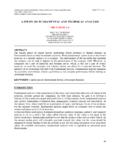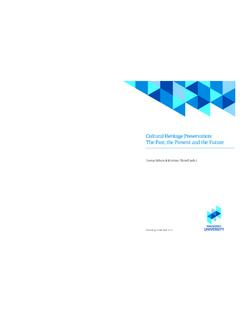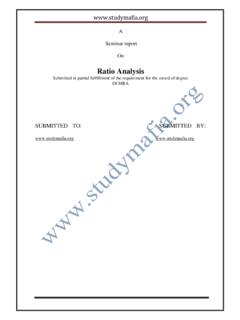Transcription of Critical Race Theory 1 Running head: CRITICAL RACE …
1 CRITICAL Race Theory 1 Running head: CRITICAL RACE Theory CRITICAL Race Theory : An Examination of its past , present , and future Implications Nicholas Daniel Hartlep1, University of Wisconsin at Milwaukee ERIC Date of Publication: October 11, 2009 1 Nicholas Daniel Hartlep is a student at the University of Wisconsin, Milwaukee, where he is pursuing a degree in Urban Education & Social Foundations of Education. His research focuses on CRITICAL Race Theory (CRT) as it relates to race, equity, and the improvement of education at the preK-12 level. Before becoming an Advanced Opportunity Program (AOP) Fellow, Hartlep was a teacher in the Milwaukee Public Schools, the largest school district in the state of Wisconsin.
2 Author s Note: Address all correspondence to Nicholas Daniel Hartlep, Fellow, now at the Urban Education Doctoral Program, University of Wisconsin-Milwaukee, Milwaukee, WI 53201. CRITICAL Race Theory 2 Abstract This paper endeavors to evaluate the current body of research conducted on CRITICAL Race Theory (CRT). It fixates on historically marginalized populations within the urban school setting and the larger society. This evaluation is carried out through a literature research synthesis. First, the origins of CRT are articulated. The history of CRT in the United States is discussed. The article lists the five tenets of CRT, providing brief overviews and examples of the tenets. Focus is drawn upon studies done on CRT: Universalistic Paradigms vs. Relativistic Paradigms. The penultimate section of this paper asks, knowing what we know, where do we go from here?
3 Propositions for future research are made. Lastly, implications for further research are cited. It is the author s intent to elaborate and provide insights into an abundantly-written-about topic, CRT, in such a way that both Crits and laypeople will have their paradigms and conceptions challenged and expanded. CRITICAL Race Theory 3 CRITICAL Race Theory : An Examination of its past , present , and future Implications Introduction: Purpose and Rationale As marginalized people we should strive to increase our power, cohesiveness, and representation in all significant areas of society. We should do this though, because we are entitled to these things and because fundamental fairness requires this allocation of power. (Delgado, 2009, p 110) This paper endeavors to evaluate the current body of research conducted on CRITICAL Race Theory (henceforth CRT).
4 It fixates on historically marginalized populations within the urban school setting and the larger society. This evaluation is carried out through a literature research synthesis. Literature Review: CRT Delgado s (2009) epigraph implores all of us inside and outside the educational arena to equalize the educational experiences for students of color. The academy uses various definitions to designate who students of color are. This paper designates students of color to include all students who are not non-Hispanic European Americans. Many educational policies and practices are documented to be culturally insensitive, being highly Eurocentric and ethnocentric, since they are monolingual and male oriented ( , Banks, 2004, p. 246-247; Delgado, 2009; Delgado & Stefancic, 2001; Valdes, Culp, & Harris, 2002).
5 Educational policies and practices have also traditionally viewed low-income students and students of color from deficit points of view. Equally insidious, if we examine preK-12 school curricula closely, we quickly ascertain whose knowledge is taught, valued, and represented in schools nationwide. This hidden curriculum flagrantly services white students. At worst it demonizes students of color; at best it inconveniences them. A popular educational practice is tracking CRITICAL Race Theory 4 students whereby the curricula that students of color undergo inadequately prepare them for college. Another equally debilitating practice for students of color is the promotion mjof white students to take Advanced Placement (AP) courses in high school that may lead to receiving college credit for work completed in secondary school.
6 It is accurate and justified to declare that the educational milieu for black and brown faces needs to be radically improved. This radical improvement will be made through CRITICAL research. In this literature research synthesis, historically marginalized populations within the urban school setting and the larger society will be evaluated and examined. First, the origins of CRT are articulated. The history of CRT in the United States is discussed. The article lists the five tenets of CRT, providing brief overviews and examples of the tenets. Focus is drawn upon studies done on CRT: Universalistic Paradigms vs. Relativistic Paradigms. The penultimate section of this paper asks, knowing what we know, where do we go from here?
7 Propositions for future research are made. Lastly, implications for further research are cited. It s the author s intent to elaborate and provide insights into an abundantly-written-about topic, CRT, in such a way that both Crits and laypeople will have their paradigms and conceptions challenged and expanded. The Origins of CRT CRT s origin is unique. It finds its genesis steeped in two movements CRITICAL legal studiesi and radical feminism and began in the mid-1970s, although CRT made its original debut at a first-ever workshop held at St. Benedict Center in Madison, Wisconsin, in 1989 ( , Taylor, 2009; Delgado, 2001, Introduction). CRT, or the radical CRITICAL Race Theory 5 legal movement that sought to transform the relationship among race, racism, and power, was created as a response to CRITICAL legal studies (CLS) the legal movement that challenged liberalism, denying that law was neutral, that every case had a single correct answer, and that rights were of vital importance.
8 People of color associated with the CLS movement were marginalized. This marginalization, frustration, and dissatisfaction with CLS led to CRT being born, issues of race forming its epicenter. The History of CRT in the : Celebrating Its Second Decade Although originating in the mid-1970s, CRT is still in its infancy; thus, it has not yet reached its zenith. This is fortunate for people of color, when factoring in the polemical nature and history of race relations. CRT celebrates success in the 21st century. According to Valdes, Culp, and Harris (2002), Despite the doubts, sneers, and attacks, CRT has not only survived but is also flourishing as it enters its second decade (p. 4). When discussing CRT s brief history in the , it is valuable to frame the CRT movement in terms of what it has already faced and overcome; otherwise, its past will be forgotten and it will become a relic of the past and remain inert, or even worse, be modified by future historians to reflect white self-interests and self-preservation.
9 Historically, CRT began to formulate a discourse that focused on issues of race and racism in the law in the same way that education scholars began to formulate a critique of race and racism in education (Crenshaw, 2002; Tate, 1997). During the early to mid-1980s, CRT critiqued the law, society, and race. However, CRT has now grown to be an expansive and credible movement that is both inner- and cross-disciplinary, particularly in regard to education. CRITICAL Race Theory 6 Although CRT still attempts to demystify racial stereotypes, racial inequities, sexism, classism, and xenophobic practices, it currently has leant much more of its attention to addressing issues of curricula discrimination in a time of the No Child Left Behind Act (2001) and its fascination with high-stakes testing.
10 It is worth citing McLaren at length when he declares: From the perspective of CRITICAL educational theorists, the curriculum represents much more than a program of study, a classroom text, or a course syllabus. Rather, it represents the introduction to a particular form of life; it serves in part to prepare students for dominant or subordinate positions in the existing society [his emphasis]. (McLaren, 2003, in The CRITICAL Pedagogy Reader, p. 86) The history of CRT in the is rich; however, if CRT is to continue to be fruitful in its second decade, it must continue to make radical strides to equalize the educational opportunities for students of color. CRT has many accomplishments it can boast of: affirmative action policies, provision of truth with issues of urban planning (that include gentrification/segregation), and equal and fair housing rights to name a few.















